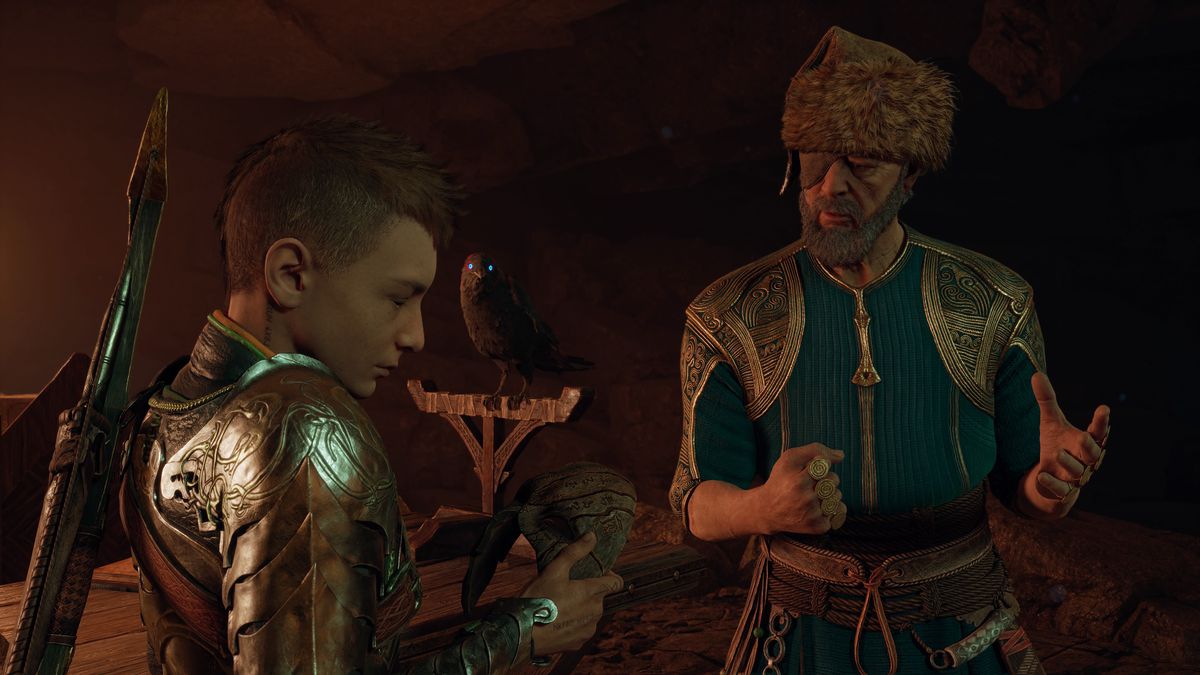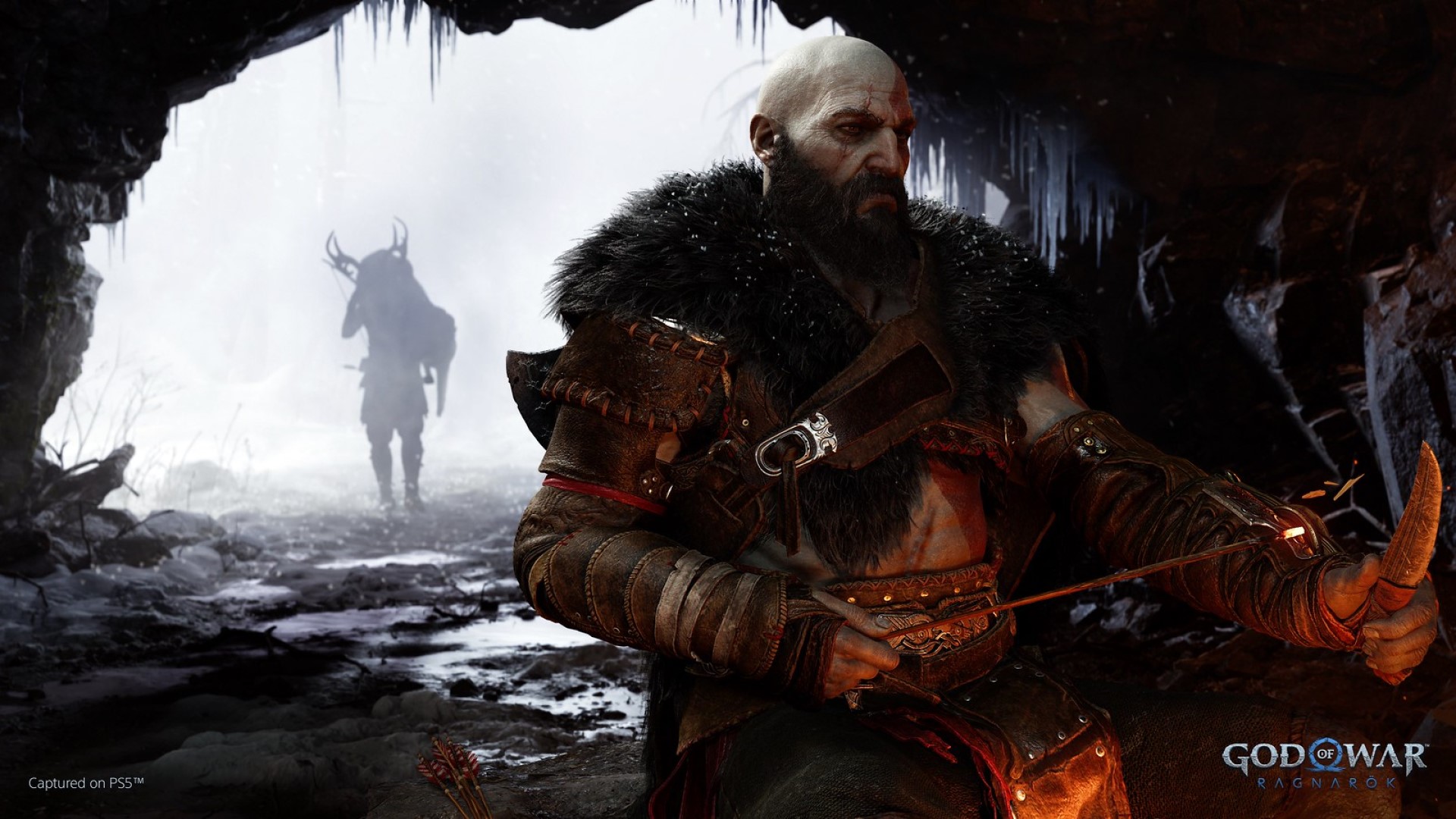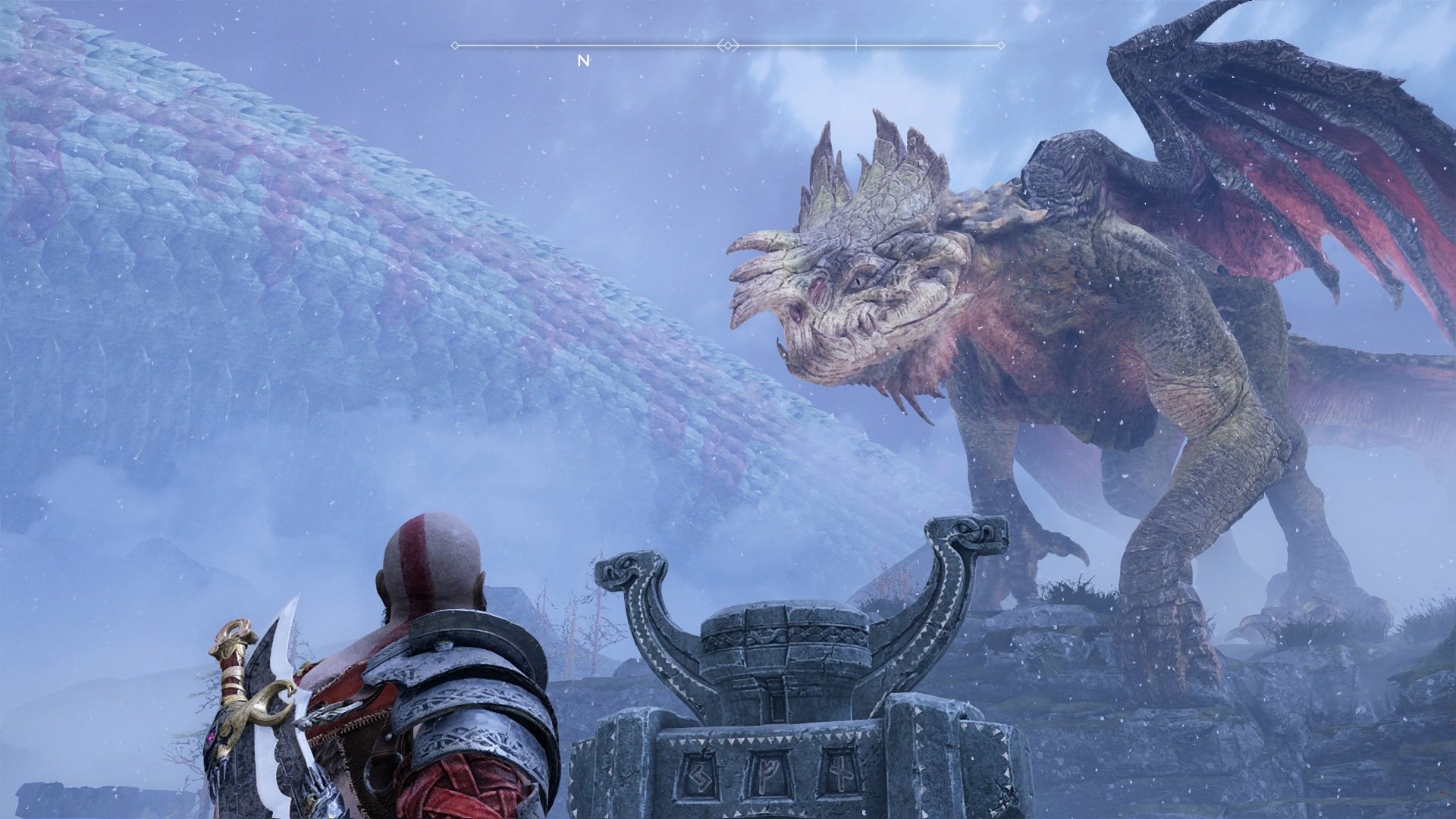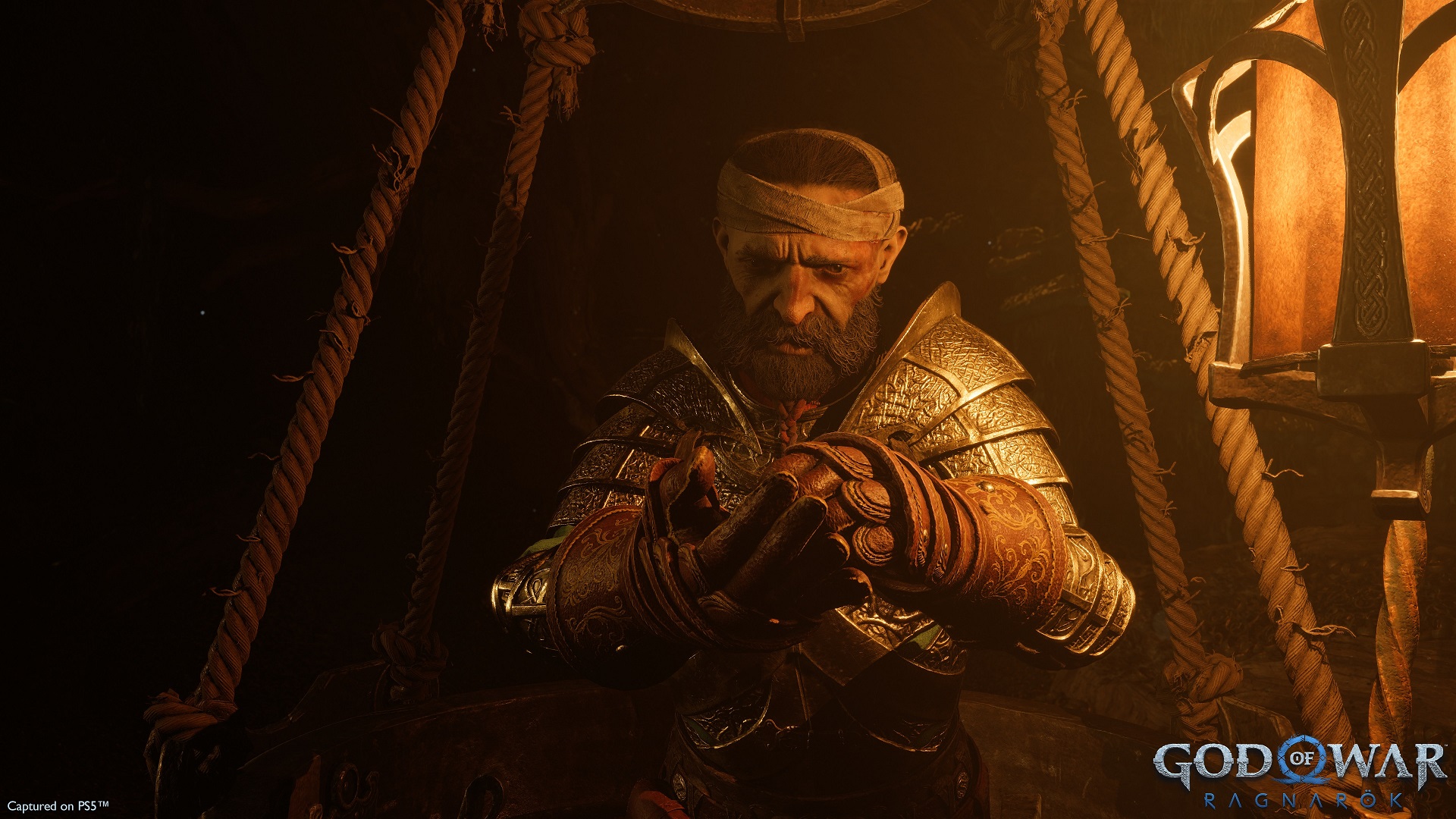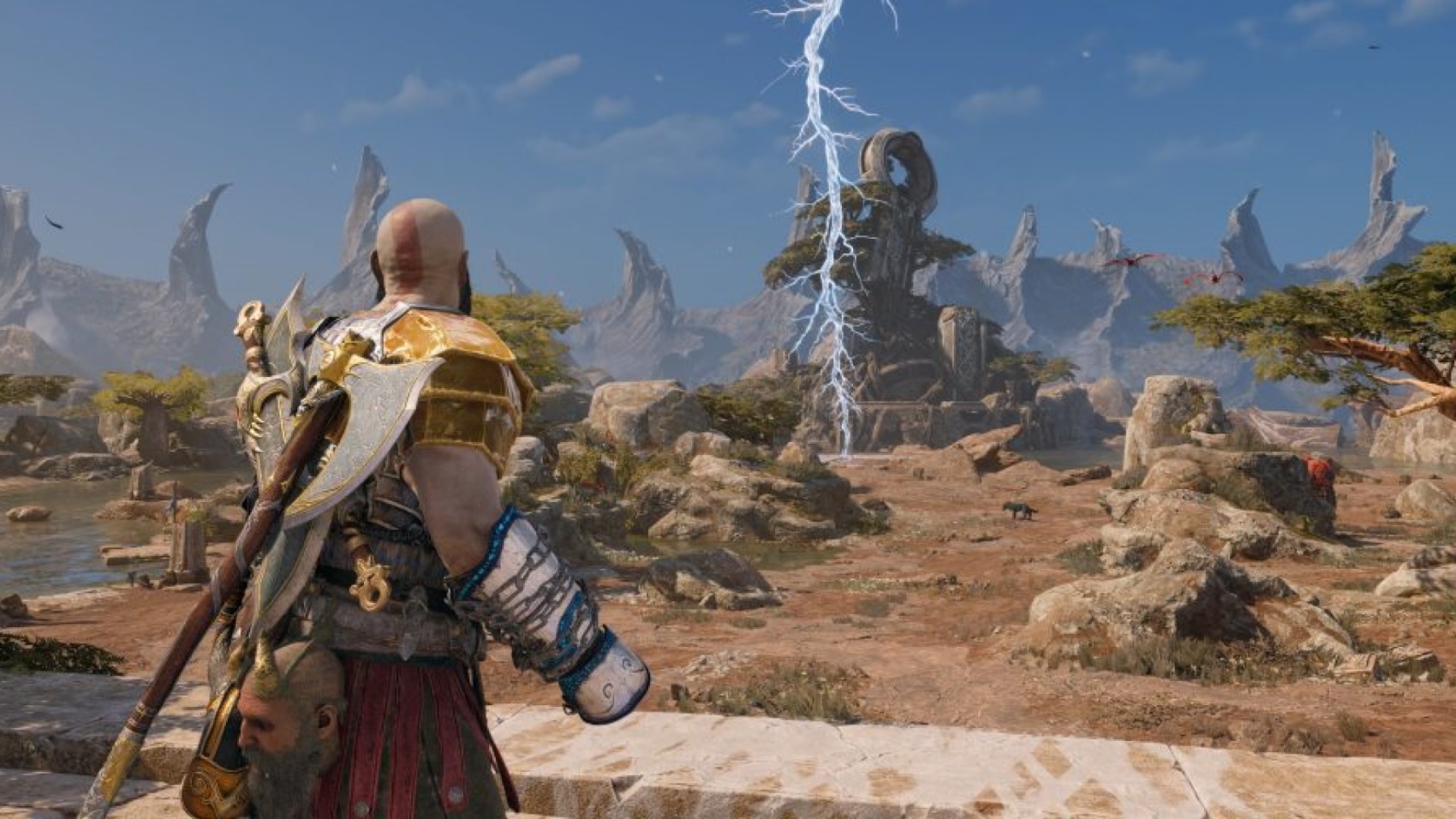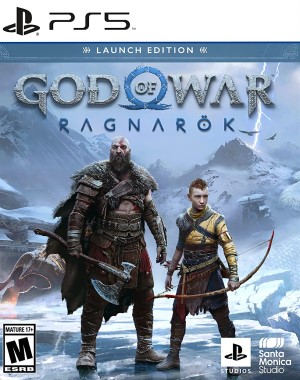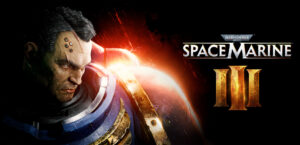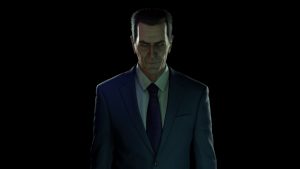
God of War Ragnarok has wrapped up the series’ Norse mythology saga, but it isn’t as complete and thorough of an ending as some may have expected. Doors have been left open for future stories (perhaps of a smaller scale) to be told in this setting with this set of characters, but even beyond that, there are a few lingering questions from this game and from the last that still remain unanswered- some big, others relatively minor. Here, we’re going to talk about a few such questions that we have.
NOTE: There are major spoilers ahead for God of War Ragnarok. Proceed at your own risk.
THE HORN
Let’s start off with the most obvious question- and funnily enough, it’s a question that we’ve had since we first played 2018’s God of War. Several hours into that game, while Kratos is taking a sick Atreus to Freya’s place, someone blows the horn that summons the World Serpent, and is heard by Kratos and Mimir as well. The game specifically calls attention to it, but the identity of the person who blew the horn is left shrouded in mystery. Most of us assumed that that would be revealed in God of War Ragnarok- which ended up not happening. The World Serpent continues to be an important part of the story in sequel, but we still don’t know who it was who blew that horn during the events of the previous game- which, by extension, means we still don’t know why (or if) that event was important.
One particularly popular theory has guessed that when Kratos blows Gjallarhorn to begin Ragnarok at the end of the game, the powerful blast of the horn echoes through time and can be heard in the past, during the events of the 2018 game. Santa Monica Studio’s creative director Cory Barlog has very conclusively shot that theory down on Twitter. That said, Barlog also recently said in another tweet that he plans on unshrouding this particular mystery “one day”, which means a future God of War game may still end up answering this long-standing question.
THE MASK AND THE RIFT
Halfway through God of War Ragnarok, the story sort of flips on its head, when Atreus travels to Asgard, is greeted by Odin, and is shown something that turns out to be central to the rest of the game’s narrative. Below Odin’s keep in Asgard, he shows Atreus a mysterious rift, supposedly one that is torn between worlds and holds the ultimate secrets to all of existence’s biggest questions. Odin, who is ever-obsessed with knowledge and learning everything there is to learn, has been trying to find a way to look into this rift and glean those answers. The way to do that, he reveals to Atreus, is to find three pieces of an ancient mask that can then be used to look inside the rift.
Atreus does manage to find all three pieces and assemble the mask, but of course, at the very end, rather than being lured by Odin into wearing the mask with the promises of omniscience, Atreus instead throws the mask into the rift. But one crucial question isn’t answered- what the hell is that mask? Where did it come from? What’s its connection to the rift? Hell, what’s the rift? Where did it come from? And why did Atreus seem to have such a special connection with that mask, the kind no one else did?
We don’t claim to be experts in Norse mythology, but as far as we know, there’s nothing about a mask in the source material, which makes its existence and purpose that much more of a mystery to us. Given the fact that these are all questions that are intrinsically tied to one of the game’s most crucial plot points, might we assume that the answers are being saved for a future game? We certainly hope that’s the case…
CHANGING MYTHOLOGIES
This is perhaps the oldest question we have in this list. We’ve been asking this since God of War’s announcement back at E3 2016- how the hell did Kratos go from Greece to Midgard? How did he travel between the two settings? Did anything eventful happen on the journey? Kratos is, of course, in a very different place in this new setting, personally speaking, so fans have been desperate to learn more about how he got to that point, and about how he got to Scandinavia, geographically speaking.
That question wasn’t answered in God of War (2018), and it still hasn’t been answered in Ragnarok. One of two things are possible- either Santa Monica Studio still intends to answer it one day, and we’ll finally have those long-awaited answers in some game at some point in the future, or it might just not be relevant to the story anymore. And honestly, the latter seems likelier at this point. Ragnarok’s dream sequences where Kratos finds himself back to Faye would have been the perfect framing device to dive further into Kratos’ past, and one would think that if the developers did consider the jump from Greece to Scandinavia to be that important, they would have gone over it in one of those sections.
Of course, we still may very well end up finding out more about that, but we do wonder how important it even is at this point, especially since Kratos is likely going to find himself in another different setting before long.
THE FREED DRAGONS
After the launch of God of War (2018), creative director Cory Barlog revealed that the team at Sony Santa Monica also planned on continuing the stories in the game’s side quests in the sequel. Many assumed that we’d learn more about the three dragons that Kratos and Atreus freed in that game, and about what became of them after that point, but though there are quite a few dragons to find (and kill) in God of War Ragnarok, those three particular dragons never make another appearance.
So what’s the deal with them? Sadly, our guess it that they may have been left on the cutting floor during Ragnarok’s development. The game does pick up the threads of some optional content from the 2018 title- for instance, Ragnarok basically treats the entire Valkyries questline basically like it was part of the main story in its predecessor. The freed dragons, however, haven’t received that same treatment.
SINDRI
Unlike most of its other core characters, God of War Ragnarok definitely leaves Sindri in a much worse place than he is at the beginning of the game. His brother is dead, he’s all alone, and having lost everything, he’s sort of lost himself as well, having broken all bonds with his former friends and, to put it simply, grown very, very (overtly) angry. Almost like a small, less fearsome, and less extreme version of angry Kratos.
We do see him very briefly after the credits have rolled as well, but it’s clear that his arc isn’t finished. At least it feels that way. In particular, it feels like there’s unfinished business between him and Atreus, seeing as Sindri blames him for Brok’s death and for Odin’s deception. Given the strong friendship the two of them formed, we’d love for their to be closure to Sindri’s arc in some way, shape, or form in the future. And who knows- if Santa Monica Studio ends up making an Atreus-focused spinoff like many are predicting, Sindri may end up being an important part of its story.
FAYE
Faye was a crucial character in God of War (2018), and to no one’s surprise, she continues to be important in Ragnarok as well. In fact, we even see her in a couple of dream sequences, which means we can now finally put a face to the name. And though we even learn more about her past, particularly through a collection of side quests in Vanaheim’s crater areas, there are still some very important details that we don’t know about her.
The most important of them all is- how did she die? Her death is an important moment- it’s what essentially kicks off this whole story, after all. And yet, we’ve never really been told how she died in the first place. We know that she wasn’t killed by an Aesir- Kratos would have found that out, and by the time she died, it had been many years since she’d gone in hiding anyway. So should we just assume that she died of natural causes?








